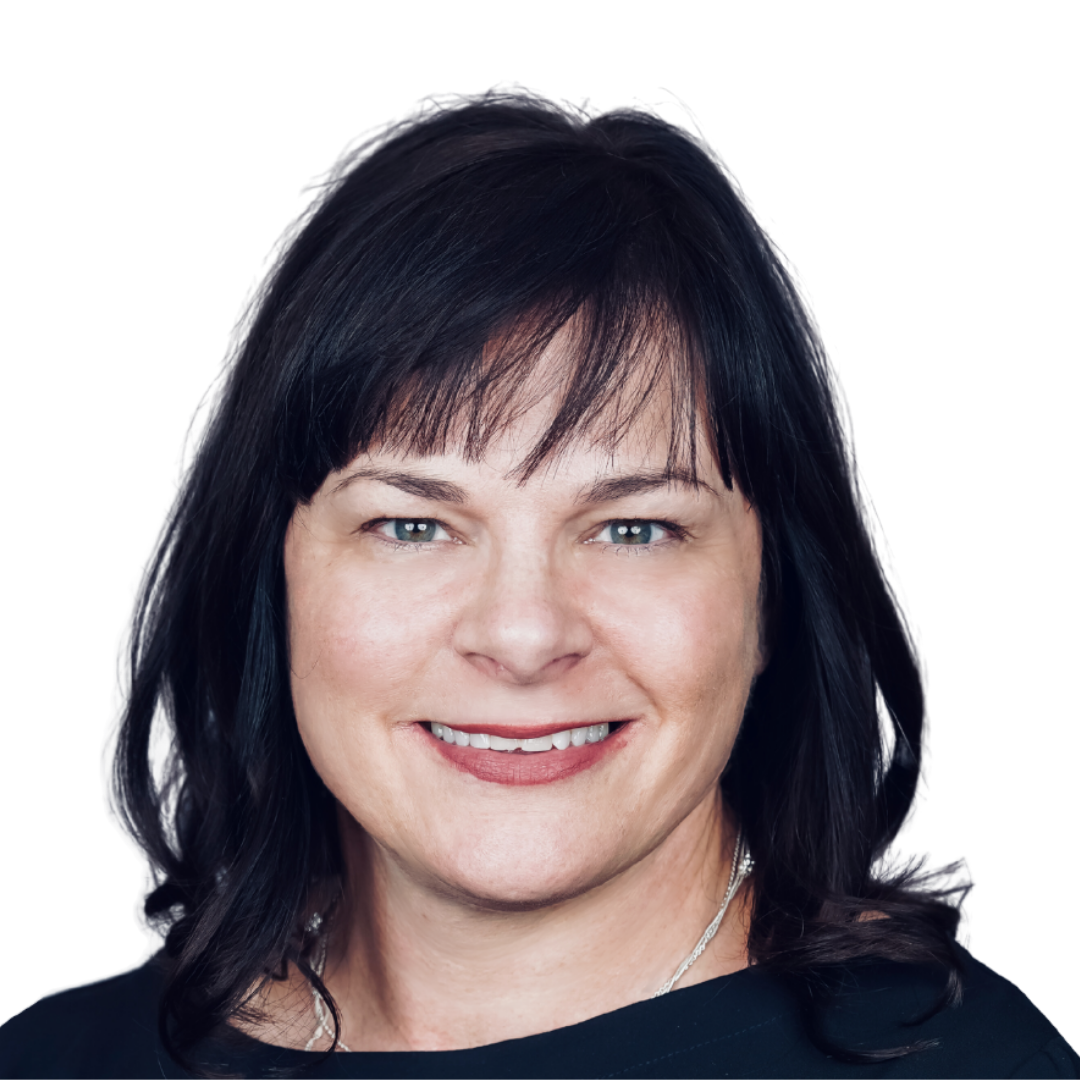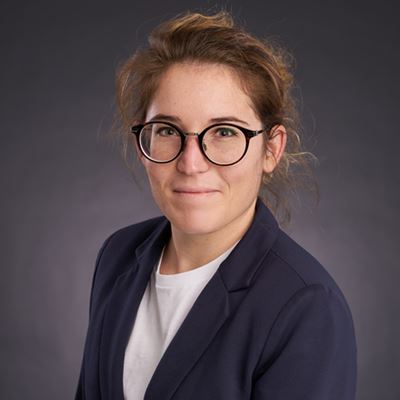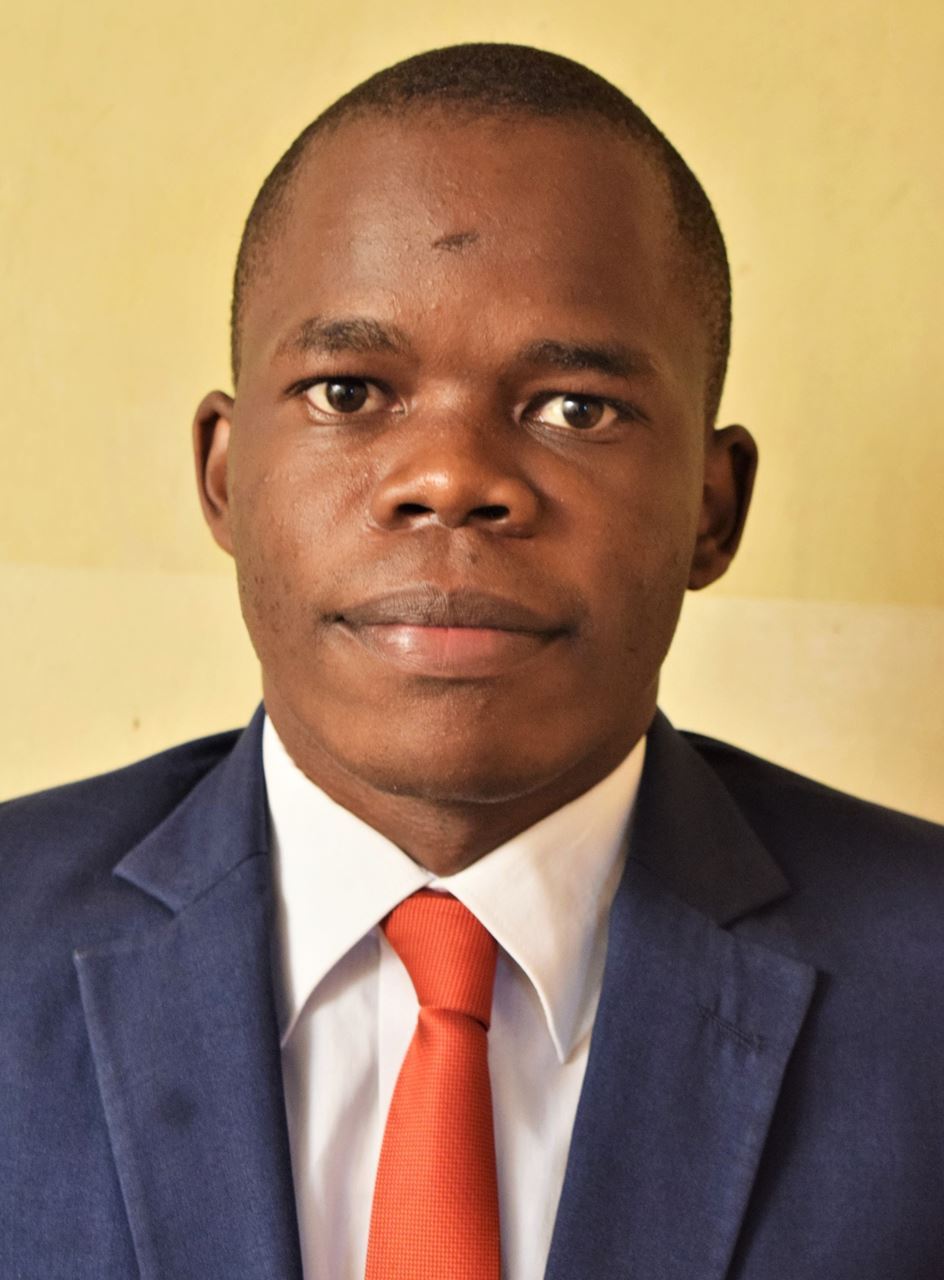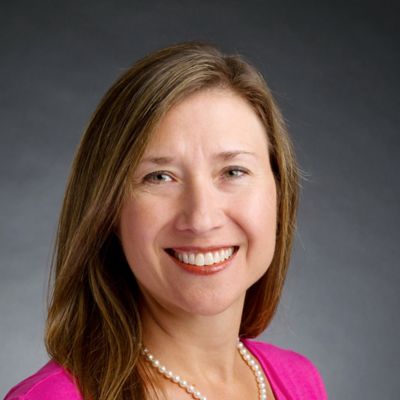Previous Member Spotlight
|
|
|
|
|
|
|
|
|
March Member Spotlight - Dr. Jasmine Luzum, PharmD, PhD, FHFSA, FAHA
Questions: 1. What is your current role? What do you enjoy most about it? I am an Assistant Professor at the University of Michigan College of Pharmacy. My role encompasses leading my cardiovascular pharmacogenetic research lab, teaching, and engaging in service activities both on campus and with national organizations. What I find most rewarding is the impact my work has on improving healthcare: my research makes medications safer and more effective, and my teaching and service efforts guide current and future healthcare providers and scientists. 2. How long have you been a member of PGRN? How did you first join PGRN?While I can't pinpoint the exact date, I believe I joined PGRN when I was a PhD student around 2013 because my dissertation focused on pharmacogenetics. I also rejoined as a founding member when the PGRN was re-established. 3. In what ways has PGRN supported your career in pharmacogenomics?The PGRN has been instrumental in my career in many ways. It's facilitated new research collaborations through networking opportunities, provided ongoing education via the RIPS monthly webinars, and offered valuable resources like the "PGRN toolkit" on the PGRN website. I utilize these tools in my own research and teach them to the students in my graduate-level pharmacogenetics research course and those doing research projects in my lab. The annual PGRN meeting has been an outstanding platform for both learning about others’ research and sharing my own. I greatly enjoy being a part of the PGRN Implementation workgroup because I learn about clinical implementation of pharmacogenomics from those who are directly involved in it and leading it around the world. PGRN membership has also led to significant publications that I am very proud of, like the PGRN Translational Pharmacogenetics Program (TPP) report on pharmacogenetic implementations across 8 US healthcare systems published in 2017 (PMID: 28090649) and the pharmacogenetic tutorial for cardiovascular healthcare providers we published in 2023 (PMID: 37303270). 4. What excites you the most about the future of pharmacogenomics?I am optimistic that we are getting closer to pharmacogenetics becoming a routine part of healthcare. The progress we have made in the past few years has been remarkable. Major milestones that recently come to mind include more randomized clinical trial evidence, clinical practice guidelines, improved insurance reimbursement, methods for integration into electronic health records and clinical decision support, and enhanced resources for clinician education. 5. Reflecting on your journey as a woman in science, what piece of advice has stuck with you throughout your career?One piece of advice that has stuck with me throughout my career is to not be afraid to ask for help when you need it. I burnt out early in my career trying to perfectly balance my responsibilities at work, home, and as a mother to young children. I had to swallow my pride and admit that I can’t do everything by myself and I can’t do everything perfectly. So I had to seek out help from others and learn to accept that not everything will be perfect. Some books that have helped me include “Nice Girls Don't Get the Corner Office: Unconscious Mistakes Women Make That Sabotage Their Careers” by Lois Frankel; “Drop the Ball: Achieving More by Doing Less” by Tiffany Dufu; “Dear Mother: Poems on the hot mess of motherhood” by Bunmi Laditan; and “Life Is Tough... but So Are You” by Heather Stillufsen. 6. Please provide a link to your Bibliography and/or professional profile (e.g., LinkedIn) if you are willing to share for others who wish to connect with you:www.linkedin.com/in/jasmine-luzum-pharmd-phd-fhfsa-faha-4a360731 7. When you are not working, how do you enjoy spending your time?In my free time, I enjoy having fun with my family and friends or reading. When I read for fun, I like historical fiction, fantasy, sci-fi, or romance novels. 8. What is a fun fact about you?I know lyrics to pretty much every song I hear, and I will sing them too (badly). |
PGRN August Member Spotlight- Kristine R. Crews and Yingbo Huang

“I consider PGRN a central community for clinical and translational researchers in pharmacogenomics. No other society has the focus that spans discovery research to implementation of pharmacogenomics in clinical practice. The RIPS topics and in-person scientific meetings and poster sessions are always of interest, always novel, and help us to collaborate to push boundaries in pharmacogenomics discovery and implementation. The global focus of the PGRN has made the world smaller for us all and will increase equity in pharmacogenomics research.” - Kristine R. Crews
Kristine R. Crews: I earned my B.S. in pharmacy and my Pharm.D. degrees from Rutgers University. I completed a PGY1 pharmacy practice residency and a PGY2 clinical pharmacokinetics specialty residency at the University of Kentucky Chandler Medical Center and completed a fellowship in clinical pharmacokinetics and pharmacodynamics at the University of North Carolina and Glaxo Wellcome, Inc. I joined St. Jude straight out of my fellowship training. I am a Residency Program Director of an ASHP-Accredited PGY2 Residency in Clinical Pharmacogenomics.
Yingbo Huang: Research Fellow, Department of Medical Oncology, Dana-Farber Cancer Institute, Harvard Medical School, Boston, MA
Questions:
1. How long have you been a member of PGRN, and how did you first join PGRN?Kristine R. Crews: I’ve been a member since PGRN III was established in 2010 and I came up through the Pharmacogenomics of Anticancer Agents Research in Children (PAAR4Kids) group. The first PGRN meeting I attended was in Nashville that year, where our team presented our first efforts in creating clinical decision support for pharmacogenomics in the electronic health record. The PGRN scientific meetings are unparalleled for hearing of cutting-edge translational research and for networking with pharmacogenomics researchers and implementers.
Yingbo Huang: I have been a trainee member of PGRN since 2021 when I was a PhD candidate at the University of Minnesota.2. What is your current position/role, and what do you enjoy most about it?
Kristine R. Crews: I am Director of Research Operations in the Department of Pharmacy and Pharmaceutical Sciences. At St. Jude, our clinicians are researchers and our researchers are clinically-minded. As a translational pharmacogenomics researcher, I bridge the bench to the bedside. I work within our Clinical Pharmacogenomics Program that focuses on providing tailored personalized dosing to pediatric patients. A large part of our team’s emphasis is on training the next generation of pharmacogenomics experts, as well as providing pharmacogenomic education to patients, families and other healthcare professionals.
Yingbo Huang: Currently, I am a postdoctoral research fellow at the Dana-Farber Cancer Institute and Harvard Medical School. I am also affiliated with the Broad Institute as a postdoctoral scholar in the Medical and Population Genetics Program. I greatly enjoy studying cancer and anti-cancer drug responses. During my PhD training in Stephanie Huang’s group, I gained experience in analyzing large-scale multi-omic data from cancer patients and derived biologically relevant hypotheses from these analyses. Often, I observed interesting associations between genetic bases and phenotypic variations, such as disease prognosis and drug response. I always wanted to experimentally investigate my observations in a clinically relevant model. This led me to extend my research training to genetic editing in cancer research. Currently, I am studying the genetic and non-genetic mechanisms of drug resistance in colorectal cancers.
3. How has PGRN helped your career in pharmacogenomics?
Kristine R. Crews: I consider PGRN a central community for clinical and translational researchers in pharmacogenomics. No other society has the focus that spans discovery research to implementation of pharmacogenomics in clinical practice. The RIPS topics and in-person scientific meetings and poster sessions are always of interest, always novel, and help us to collaborate to push boundaries in pharmacogenomics discovery and implementation. The global focus of the PGRN has made the world smaller for us all and will increase equity in pharmacogenomics research.
Yingbo Huang:One aspect I love about PGRN is that I have met many brilliant researchers in the fields of human genetics and statistical genetics. During my early PhD training, I was fortunate to consult with these experts on questions I encountered, such as running GWAS. In the field of PGx, great resources and tools, such as PharmGKB, have tremendously benefited my research. One of my manuscripts sourced many annotations from PharmGKB.
4. What do you see as the most exciting advances in pharmacogenomics over the next 2-5 years?
Kristine R. Crews: We’ve come so far with implementing precision medicine for patients, and the field is poised for rapid advancement in the next five years. In oncology, we anticipate advances in developing comprehensive genomic profiles that partner with functional precision medicine techniques to predict drug response and enable more precise treatment selection. Additionally, real-world data integration will refine pharmacogenomic models. These advancements will ultimately improve patient outcomes and drive precision medicine forward.
I’m excited about the growing dedicated effort and rigorous use of improvement and implementation science methods for adoption in practice. By collaborating with researchers who have expertise in implementation science, pharmacogenomics can really become the model for how to rapidly move discoveries into practice.
Yingbo Huang: As a scientist, I hope that more associations identified in PGx work will be verified as causal, and the underlying mechanisms will be elucidated.
Personal questions
5. If there are no restrictions to travel, where would you like to go in the next 3-6 months?
Kristine R. Crews: There are so many gorgeous parts of North America to see. I’d love to spend time anywhere where there are hiking trails and beautiful vistas during the day and dark skies for stargazing at night.
Yingbo Huang: I would like to go back home to see my family.
6. When you’re not working, how do you enjoy spending your time?
Kristine R. Crews: You’ll find me on the road cheering on my kids’ lacrosse and soccer teams nearly every weekend. Soccer is always on a TV in our house, especially the beloved US Women’s National Soccer Team.
Yingbo Huang: Although transitioning from bioinformatics work to experimental work does not leave me much spare time, I enjoy watching shows and movies to relax.
May Member Spotlight - Dr. Yuan Ji
 1. How long have you been a member of PGRN, and how did you first join PGRN?
1. How long have you been a member of PGRN, and how did you first join PGRN?I first got involved with PGRN twenty years back during my graduate studies while working on my PhD thesis under Dr. Richard Weinshilboum, who led the NIH-PGRN PPII Program at the Mayo Clinic. When the New PGRN IV was established in July 2015, I eagerly joined as a founding member.
2. What is your current position/role, and what do you enjoy most about it?
I hold the role of Section Chief of Molecular Genetics and Genomics at ARUP Laboratories, a respected national nonprofit and academic reference laboratory. At ARUP, we offer a comprehensive range of genetic testing services, covering various genetic conditions, including pharmacogenetics. Additionally, I serve as an associate professor of clinical pathology at the University of Utah School of Medicine where I teach and mentor pathology trainees including laboratory genetics and genomics fellows.
3. How has PGRN helped your career in pharmacogenomics?
I consider PGRN an indispensable community for all involved in pharmacogenomics, spanning from research discovery and clinical testing to guideline creation and database development. Being part of this community has greatly enriched both my clinical practice in PGx testing and my professional development. Here, I have the opportunity to learn from the best (researchers, pharmacists, and clinical laboratory directors) in the field. At the same time, I contribute my own insights and experiences, having traversed both research discovery and clinical testing realms throughout my career journey.
4. What do you see as the most exciting advances in pharmacogenomics over the next 2-5 years?
In the next 2-5 years, significant progress is expected in overcoming the obstacles to clinical pharmacogenomics implementation. Notably, various professional societies and working groups, including the Association of Molecular Pathology PGx Working Group—where both myself and several PGRN members deeply involve—are actively developing guidelines and recommendation documents. This collaborative effort aims to standardize clinical PGx testing practices across laboratories, foster greater collaboration among stakeholder societies, and pinpoint clinical gaps in PGx for further attention.
Another anticipated evolution in pharmacogenomics is the transition of many clinical laboratories from targeted genotyping-based PGx testing to Next-Generation Sequencing (NGS)-based platforms. This shift will occur as NGS becomes more cost-effective and technologically adept for handling the complexities of several challenging pharmacogenes.
Personal questions
5. If there are no restrictions to travel, where would you like to go in the next 3-6 months?
I'm eager to journey back to China and explore numerous places where traditional Chinese customs are still upheld. After residing in the US for more than two decades, I have developed a profound fascination for the history, philosophy, and even the traditional Chinese medicine embedded within the Chinese culture. I am keen to delve deeper into these aspects during my visit.
6. When you’re not working, how do you enjoy spending your time?
I enjoy my homemade mocha coffee while immersing myself in a good book. Crafting dumplings is my ritual for recharging and reconnecting with my Zen spirit—a skill I have cultivated since childhood, growing up with a Northeastern Chinese background.
May Trainee Member Spotlight - Wendy Wang

About 1 year. My PI, Andrea Gaedigk, suggested that I join for the PGRN conference in 2023.
2. What is your current position/role, and what do you enjoy most about it?
My current role is Research Associate. I help support PGx genotyping projects from internal PIs, which are mostly clinicians from diverse specialties interested in the genetic component of drug metabolism, and external partners utilizing our lab’s expertise like other academic institutions, the CDC (GeT-RM), and several biotech companies. I’ve also been able to help make educational materials for community outreach initiatives and our in-house PGx implementation efforts. I really enjoy that I get to do and learn about a diversity of topics; every day looks very different. Some days I’m on the bench running samples or validating new technologies. Other days, I’m doing more analysis, organizing projects, and going down literature rabbit holes. I’m also blessed to be working with an incredibly talented and supportive team.
3. How has PGRN helped your career in pharmacogenomics?
I’m still fairly new, but it was fun meeting different people and getting to know their research at the PGRN conference last year. This year, I’m excited to present my first poster!
4. What do you see as the most exciting advances in pharmacogenomics over the next 2-5 years?
Long-read sequencing becoming more developed and accessible for clinical PGx testing. Our favorite gene, CYP2D6, is so important but also frustratingly complex. Long-read sequencing, especially tuned for CNV determination, could solve a lot of problems for the use CYP2D6 to inform medication choice/dose.
5. If there are no restrictions to travel, where would you like to go in the next 3-6 months?
One of the moons of Saturn would be pretty cool, but if we’re talking Earth only – Taiwan has always been a dream of mine. My family immigrated to the U.S. when I was very young, and we had not had the chance to go back since.
6. When you’re not working, how do you enjoy spending your time?
Eating, going to concerts, hiking disc golf courses with my husband, taking pictures of my cats, and following Formula 1 racing.
April Member Spotlight - Dr Hana Al Alshaykh
 Dr. Hana Al Alshaykh is a Clinical Pharmacogenomics Specialist and a Board-Certified Pharmacotherapy Specialist. She completed her Doctor of Pharmacy degree at Medical University of South Carolina (MUSC) and her postgraduate year residency (PGY1) training at King Faisal Specialist Hospital and Research Centre (KFSHRC). She continued her career path through a Clinical Pharmacogenomics (PGx) PGY2 training at University of Florida. Her training and expertise concentrate on the implementation of Pharmacogenomics service in clinical practice and developing it from ground level up. Currently she works at KFSHRC as PGx implementer in collaboration with Pharmaceutical Care Division and Center for Genomics Medicine and she couples her interest with research and teaching as she loves to see precision medicine disseminates and grow in the Middle East region.
Dr. Hana Al Alshaykh is a Clinical Pharmacogenomics Specialist and a Board-Certified Pharmacotherapy Specialist. She completed her Doctor of Pharmacy degree at Medical University of South Carolina (MUSC) and her postgraduate year residency (PGY1) training at King Faisal Specialist Hospital and Research Centre (KFSHRC). She continued her career path through a Clinical Pharmacogenomics (PGx) PGY2 training at University of Florida. Her training and expertise concentrate on the implementation of Pharmacogenomics service in clinical practice and developing it from ground level up. Currently she works at KFSHRC as PGx implementer in collaboration with Pharmaceutical Care Division and Center for Genomics Medicine and she couples her interest with research and teaching as she loves to see precision medicine disseminates and grow in the Middle East region.Questions:
1. How long have you been a member of PGRN, and how did you first join PGRN?I’ve been a member of PGRN for 2 years, yay! I joined while I was doing my Clinical Pharmacogenomics PGY2 residency training at University of Florida.
2. What is your current position/role, and what do you enjoy most about it?
I’m a Clinical Pharmacogenomics Specialist at King Faisal Specialist Hospital and Research Center and an Adjunct Assistant Professor at Alfaisal University, Riyadh, Saudi Arabia.
I work with an interdisciplinary team to build the infrastructure of pharmacogenomics clinical service from ground level up, providing clinical pharmacogenomics consults, and maintaining/updating the scope and content of the service for optimal utilization over time.
What I enjoy the most is the dynamic nature of my job; as my responsibilities are varying across different stages of the implementation. It integrates multiple tasks and skills while going through the process. It always excites me to learn, teach, and conduct research all while building the service and expanding it to reach more patients. Also, it is wonderful to be part of the implementing team leading an innovative service to optimize patient care across different disciplines.
3. How has PGRN helped your career in pharmacogenomics?
Being part of PGRN is a fantastic way to connect with pharmacogenomics experts and stay close by collaborative and research efforts. Moreover, seeing the progress of my collogues in advocating for pharmacogenomics service and expanding its access genuinely delights and motivates me.
4. What do you see as the most exciting advances in pharmacogenomics over the next 2-5 years?
Getting a closer attention and support from drug-regulating and medical agencies. This will help big time in the widespread adoption of pharmacogenomics testing within resources that healthcare providers are more familiar with such as drug labeling and disease management guidelines. The competition among the providers of pharmacogenomics testing along with advancing pharmacogenomics testing itself will promote for a more accessible and affordable pharmacogenomics testing.
Personal questions
5. If there are no restrictions to travel, where would you like to go in the next 3-6 months?
Hop on a sailing boat and explore the far east and pacific islands!
6. When you’re not working, how do you enjoy spending your time?
Go to the nearest water access for freediving or kitesurfing J
March Member Spotlight - Amy Bower
 How long have you been a member of PGRN, and how did you first join PGRN?
How long have you been a member of PGRN, and how did you first join PGRN?
2005. I was leading the development of a molecular device to detect variants in the UGT1A1 gene in individuals receiving Irinotecan for colon cancer. I was also part of the International Haplotype Map Project and interested in variants in genes involved in drug response. I utilized the PharmGKB in my work and attended a meeting in Hawaii.
What is your current position/role, and what do you enjoy most about it?
For the past 15 years I have led a research program funded by NICHD at the ACMG focused on accelerating the discovery of novel technologies for screening, diagnosis, treatment, and management of disease in newborns and children. That effort is ending this year but it has been especially rewarding since I have a son with a condition that is now part of newborn screening around the world, Severe Combined Immunodeficiency.
How has PGRN helped your career in pharmacogenomics?
For almost twenty years, PGRN has provided amazing case studies for the application of genetics and genomics to improve outcomes in individuals across the lifespan. I think that pharmacogenomics has always been the most practical and useful application of genomics to individualize treatment and management of disease. For my next chapter, I am especially interested in adding pharmacogenomic variants to newborns and age-based screening panels to help inform parents and families.
What do you see as the most exciting advances in pharmacogenomics over the next 2-5 years?
The continued awareness of the importance of pharmacogenomics to optimize the use of lifesaving therapies. I think that it will be especially important in combination with gene and molecular therapies as we learn more about the outcomes after presymptomatic treatment of genetic disease.
Personal questionsIf there are no restrictions to travel, where would you like to go in the next 3-6 months?
Ireland
When you’re not working, how do you enjoy spending your time?
Gardening and spending time with my twins.
March Trainee Member Spotlight - Maud Maillard
 How long have you been a member of PGRN, and how did you first join PGRN?
How long have you been a member of PGRN, and how did you first join PGRN?
I have been a member of PGRN for two years, now. I joined the network when I started my postdoc at St. Jude.
What is your current position/role, and what do you enjoy most about it?
I am a PharmD, PhD, currently working as a postdoctoral associate in Dr. Jun J. Yang’s lab at St. Jude Children’s Research Hospital.
I have always known I wanted to be a researcher, and I got interested in pharmacogenomics during my PhD. Thus, I could not have dreamt of a better place than St. Jude and especially Dr. Yang’s lab to pursue my early academic career in the field of pharmacogenomics of acute lymphoblastic leukemia. In only two years, I significantly developed my scientific skills, built strong connections with colleagues worldwide and I have learned a lot about myself, thanks to this always positive and very dynamic environment. What I enjoy most is that we never get bored of (re)searching!
How has PGRN helped your career in pharmacogenomics?
As a foreigner, PGRN has significantly helped me to expand my network overseas. The PGRN annual meeting is a key for young researchers who want to connect with significant people in the field.
What do you see as the most exciting advances in pharmacogenomics over the next 2-5 years?
I wish we could implement more pharmacogenes and convince more people about the importance of pharmacogenomics in all therapeutic areas. I am really excited about the future large-scale studies involving databases like AllOfUs and the fact that we will include more individuals from different ancestries in the cohorts for genetic association studies.
Personal questions
If there are no restrictions to travel, where would you like to go in the next 3-6 months?
I plan to explore the Northwest part of the country, go hiking in Yellowstone, and drive all the way up to Glacier National Park.
When you’re not working, how do you enjoy spending your time?
I really enjoy running and hiking!
February Member Spotlight - Oyinade Kehinde

1. How long have you been a member of PGRN, and how did you first join PGRN?
I joined PGRN on July 20, 2020. My joining was in a quest to satisfy my lack of knowledge in the field of pharmacogenomics due to my relentless pursuit in optimizing patient care within my institution, Federal Neuro-Psychiatric Hospital, Lagos, Nigeria.
2. What is your current position/role, and what do you enjoy most about it?
As a clinical pharmacist, I encountered a persistent challenge; the variable response to psychotropic medications among patients, coupled with the occurrence of adverse drug reactions. Witnessing the financial strain and emotional toll this took on patients and their caregivers, along with the frustration among psychiatrists grappling with treatment decisions, stirred a passion within me to seek solutions.
As I wanted to learn more and make a difference, I jumped into precision medicine and pharmacogenetics. Even though my country didn't have much training or support, I didn't let that stop me. I believed in immersing myself in the global community of experts, which led me to become a member of PGRN from a developing country.
3. How has PGRN helped your career in pharmacogenomics?
This affiliation has not only provided me with access to cutting-edge research and resources but also connected me with mentors whose guidance proved invaluable in navigating the complexities of pharmacogenetics. One such mentorship opportunity arose when I reached out to Akinyemi Oni-Orisan and Laura Ramsey. Their willingness to share their expertise and offer collaborative opportunities propelled my journey forward, reinforcing my belief in the power of mentorship and collaboration in driving innovation.
With the support of PGRN, I'm ready to address the issues in psychiatric treatment in my country and globally. My strong dedication to improving patient care with precision medicine keeps me motivated to push limits, explore new methods, and promote the use of pharmacogenetics.
4. What do you see as the most exciting advances in pharmacogenomics over the next 2-5 years?
I'm excited about a big change in clinical pharmacogenetic testing becoming widely used in various medical specialties globally. I think this change will happen because clear, consistent, and comprehensive practice guidelines will be created. These guidelines will address more inclusion of under-represented populations with diverse genetic make-up, making sure everyone has fair access to these tests.
Global collaboration among researchers, clinicians, policymakers, and stakeholders is crucial for improving pharmacogenetic practices. By working together, we can bridge gaps, create a unified approach to gene-based therapies, and enhance healthcare. This effort aims to bring innovation, accessibility, and inclusivity, ushering in a new era of healthcare excellence where everyone gets personalized treatments based on their genetic makeup and medical needs.
5. If there are no restrictions to travel, where would you like to go in the next 3-6 months?
I would pick the Maldives. The idea of being on these private islands with powdery white sand and distinct white beaches is an exciting prospect. Staying in one of those fancy overwater bungalows, stepping right into the clear lagoon – it would be a dream come true for me.
6. What’s something about you (a fun fact) not many people know?
My participation in the Calypso dance club in elementary school. It all began with a spontaneous decision to try something new, from learning the lively steps of traditional Caribbean dances to performing in front of a cheering audience during school events, every moment spent in the Calypso dance club was filled with excitement and a sense of accomplishment.
February Trainee Spotlight - Vincent Nyangwara

I have been a member of PGRN for 3 years. I joined the network through my current PhD supervisor, Prof. Collen, who serves as chair of the PGRN developing country committee.
2. What is your current position/role, and what do you enjoy most about it?
I am early career counselor in PGRN and a PhD student in Human genetics at the university of Witwatersrand in South Africa. First, I enjoy sitting in the PGRN board meetings and making a crucial decision on behalf of young folks around the globe. Secondly, I enjoy using an individual’s genomic make up to prescribed a medication, reducing drug sides effects like cardiotoxicity.
3. How has PGRN helped your career in pharmacogenomics?
I have interacted with many peers and mentors in PGRN of whom now I look up to in my career growth as a Pharmacogeneticist.
4. What do you see as the most exciting advances in pharmacogenomics over the next 2-5 years?
In the next 2-5 years, I foresee discovery of new associations between genetic variations and drug responses which may lead to a more comprehensive understanding of pharmacogenomic influences on drug response. Moreover, continued improvements in the efficiency, accuracy, and cost-effectiveness of genetic testing technologies, will make them more accessible for broader populations.
Personal questions
5. If there are no restrictions to travel, where would you like to go in the next 3-6 months?
To be honest, I like travelling around the world. With no restrictions, I see myself somewhere in the cold winter of Canada or Caribbean Island, spending time with my fiancée.
6. When you’re not working, how do you enjoy spending your time?
Work is important, but family is the reason we go to work. So when not at work, I spend most of my time with my fiancée. Taking her out for a walk or dinner are some of my favorite moments.











